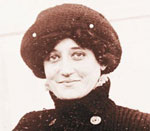INDIAN ARMED FORCES CHIEFS ON OUR RELENTLESS AND FOCUSED PUBLISHING EFFORTS

The insightful articles, inspiring narrations and analytical perspectives presented by the Editorial Team, establish an alluring connect with the reader. My compliments and best wishes to SP Guide Publications.

"Over the past 60 years, the growth of SP Guide Publications has mirrored the rising stature of Indian Navy. Its well-researched and informative magazines on Defence and Aerospace sector have served to shape an educated opinion of our military personnel, policy makers and the public alike. I wish SP's Publication team continued success, fair winds and following seas in all future endeavour!"

Since, its inception in 1964, SP Guide Publications has consistently demonstrated commitment to high-quality journalism in the aerospace and defence sectors, earning a well-deserved reputation as Asia's largest media house in this domain. I wish SP Guide Publications continued success in its pursuit of excellence.
Raymonde De Laroche (1886 - 1919)

Every licensed woman pilot after Baroness Raymonde de Laroche surely owes a small debt to the fearless French woman who started it all
Raymonde De Laroche was one of the first few women to pilot heavierthan-air powered aircraft. And she was the very first to qualify for a pilot’s licence. After performing the required manoeuvres before officials of the Aero Club of France, she was awarded brevet No. 36 by the Fédération Aéronautique Internationale on March 8, 1910.
Born Elise Deroche in Paris on August 22, 1886, she later took the name Raymonde de Laroche—befitting the glamorous stage actress she was. Raymonde was a keen sportsperson and a bit of a daredevil. She took to car racing with great enthusiasm. In fact she put her heart and soul into whatever she did. In 1908, the Wright brothers were conducting demonstration flights near Le Mans, France, and Raymonde volunteered for a joyride. She was immediately attracted to this exciting and challenging new sport. Later, when she was dining with Charles Voisin, a famous French aircraft builder of the time, he suggested that she take flying lessons. She was already an experienced balloonist and the prospect of learning to fly a fixed-wing machine thrilled her.
The Voisin was a single-seat aircraft. The pupil had to sit in the cockpit and listen to the instructor shout orders from the ground. Raymonde was a quick learner. On October 22, 1909, she was instructed to take the plane down the open field. After her first taxi run, she knew she was ready for take-off. She opened the throttle, brought the engine to full speed and got airborne, attaining an altitude of about five metres and flying a distance of almost 300 metres. A gentle touchdown later her first solo flight was safely accomplished. Reporting the feat, Flight magazine erroneously referred to her as “Baroness”—a title that stuck and served to enhance the mystique of a woman who could actually pilot a plane.
In January 1910, Raymonde hit a tree and crash-landed, suffering concussion and a broken collarbone. Determined to be the first licensed woman pilot, she refused to let this mishap discourage her. She knew that other women in Europe and the United States were not far behind. As soon as she had sufficiently recovered she participated in an air show in Egypt. On her return, she demonstrated her flying skill before the examining officials and was awarded the world’s first female pilot’s licence.
Raymonde de Laroche went on to take part in air displays at Heliopolis, Budapest, Rouen, and St Petersburg, where the Tsar himself praised her bravery and audacity. In July 1910, at the Rheims Air Meet, she experienced wake turbulence and her aircraft crashed. This time, she suffered such severe injuries that they nearly proved fatal. After a slow and painful recovery that lasted for two years, she was again fit enough to fly. But injury continued to dog her, this time on the ground. In September 1912, she was grievously hurt in an automobile accident in which Charles Voisin, her close friend and companion (who was driving) was killed. Yet, on November 25, 1913, she won the Aero Club of France’s Femina Cup for a non-stop long-distance flight of over four hours’ duration.
When the First World War began, women were grounded because flying was considered too dangerous for them. Raymonde served as a military driver—chauffeuring officers from the rear zones to the front, often under enemy fire. But as soon as the War was over, she returned to active flying. In June 1919, she set a new women’s altitude record of 4,800 m and also the women’s distance record of 323 km. However, she was not fated to savour these sweet triumphs for long.





